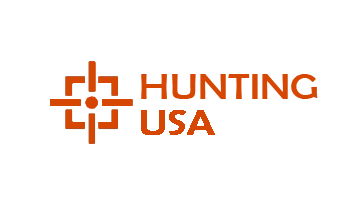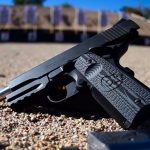7 Quality Knives Priced Under $100
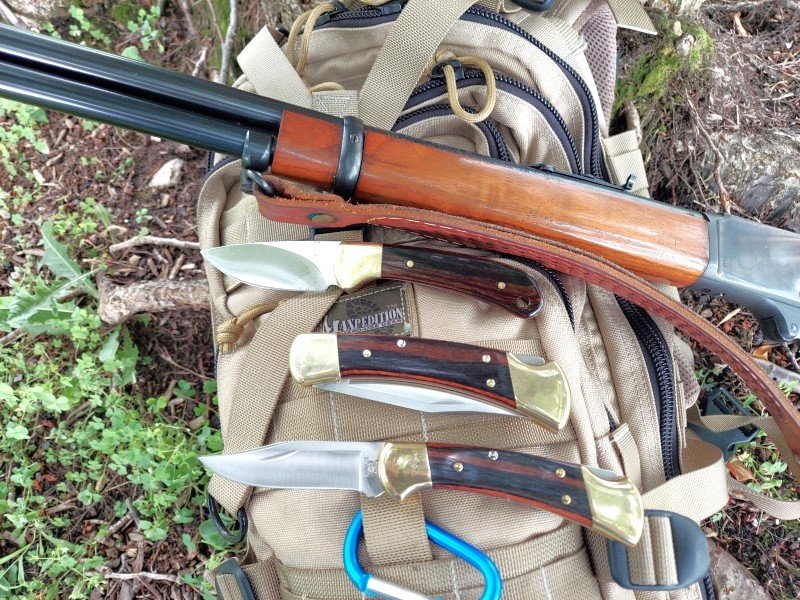
Many folks tend to like high-end things. Cars, guns, watches, flashlights, knives. High-end (read that as high-dollar) items are just plain cool and fun. Sometimes we get so caught up in the status game that we forget where we came from. So are there any quality knives out there these days that are inexpensive and actually worth their salt? Let’s take a look!
Quality knives that are also budget-friendly hit a sweet spot.
Over the years, I’ve acquired a number of knives. Some might even say I have a knife fetish, to which I’d reply, “Guilty as charged.” Some of them are high-dollar custom knives, with a few being gifts that I will never get rid of.
Just the same, in the past few years, I’ve had several jobs in which I’ve used knives on a daily basis and I didn’t necessarily want to beat on my high-dollar knives. Not that they can’t take it, but when I’m cutting near concrete or metal and there’s a risk that I could slip and seriously mess up the edge of my blade, I’d rather it not be a custom knife that’s worth several hundred dollars.
And then there’s the danger of losing an expensive knife, which I’d rather not happen.
As such, I’ve managed to pick up some less-expensive, quality knives over the years. But do they function as well as my high-end knives? Surprisingly, many actually do! A few have even exceeded the performance of my high-dollar customs.
For this article, I wanted to set a general limit of spending at a $100 cap. Now I realize that many people will never, in a million years, spend even $100 on a knife. I know people who think $50 for a knife is an extravagant waste of money. Fair enough. There are items that I purchase where I go the cheaper route and to each his own. For those folks, I might have a few examples to throw in the article that they might like, too.
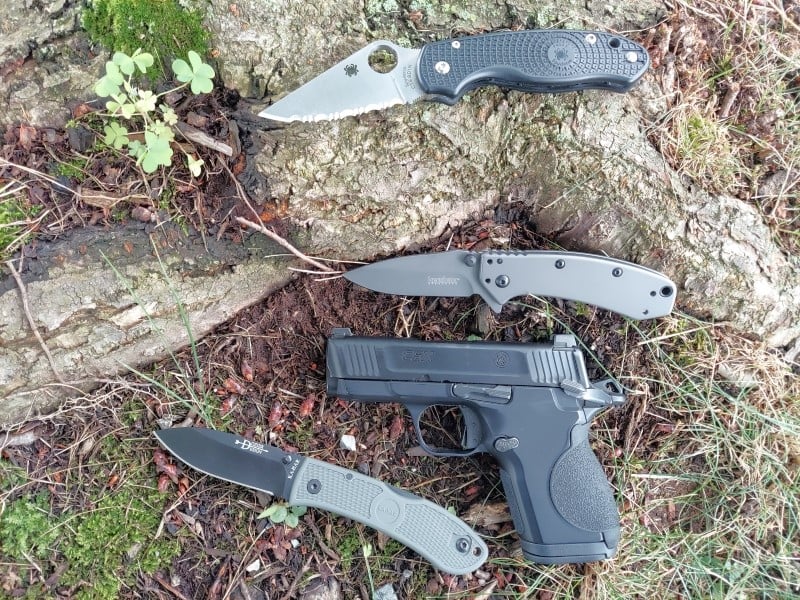
As I write this, I know some of my friends who are knife snobs are going to ridicule me for even considering carrying a knife that does not cost at least a couple hundred dollars. In fact, I literally know well over a dozen people who will carry an Emerson CQC-6, for example, some being worth around $6,000 (a few worth even more than that), as an everyday carry utility knife. And they use them hard! To these folks, I say, hats off to you! Personally, I couldn’t allow myself to use a knife that is worth that kind of money, I’d be afraid of marring the edge, breaking it, or losing it. But using them makes those folks happy, and so they have my blessing.
Now I do have some personal limitations. A cheaper knife, for me to use it, has to have an appealing profile. I have to like the knife. It needs to catch my eye, first of all, for me to even look at it. I prefer knives that are utilitarian, so the blade shape has to appeal to me and work well. And no, I’m not going to buy a $10 gas station knife. I’m just not, because that doesn’t appeal to me.
As far as the blade steel is concerned, we’re living in an age where there are some truly astounding blade steels out there! PD-1, CRU Wear, and many others hold their edge for obscenely long periods of time. Again, there are folks who will not even consider a knife unless it has the very latest new fad of super-steel. I’m not one of those guys. Sure, super-steels are neato, but I don’t necessarily need that.
With all that out of the way, let’s take a look at some budget-friendly, quality knives!
1. Buck Knives 110
When I was a young lad in the 1970s and ’80s, I yearned for a Buck 110 folding knife in the worst way. Why? Because Johnny Gage, a paramedic in the series Emergency! carried one on his belt in that ubiquitous leather sheath. Occasionally, he’d pull it out on the various calls that he and his partner, Roy DeSoto, would be called out on.
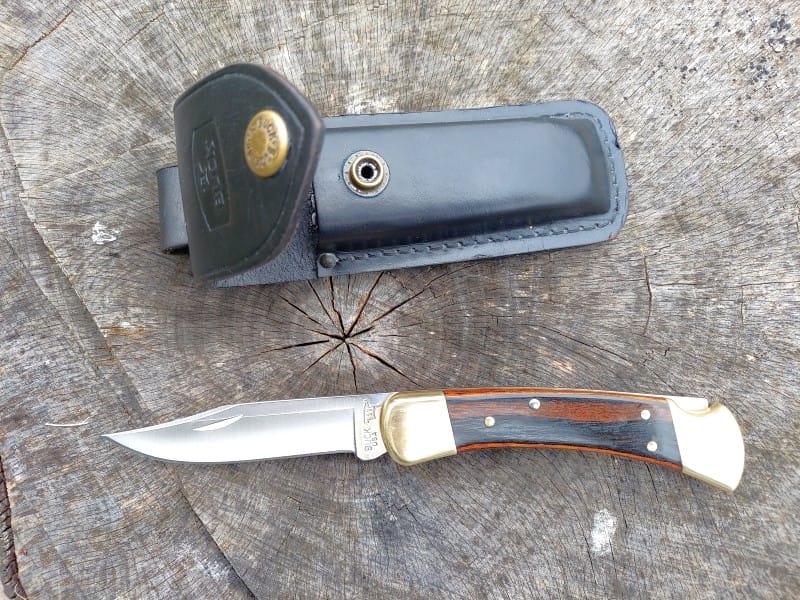
The other series that made me want one was The Dukes Of Hazzard, in which both Bo and Luke Duke carried the 110 in the leather pouches on their belt. Back in those days, those guys were influential to a youngster, and I wanted to be like them.
I never did get a Buck 110 back then. Instead, as a teenager, I settled for a very crappy copy that I believe was made in Pakistan or some damn place. Truly, there is no comparison between the real McCoy and the Pakistani version! But at the time, my teenage budget was seriously limited.
The Buck 110 has ebony handles with brass bolsters that give it an original look. They refer to it as the “Folding Hunter”, and it was created back in 1963 by Al Buck, so the design is no spring chicken. Al thought that outdoorsmen would go for a folding knife as a nice alternative to longer, fixed-blade hunting-type knives. He couldn’t have known at the time how correct he was! People flocked to it in droves, and it put Buck Knives on the map.
Ebony is used as the wood for the handles of the 110. The blade is 3.75″ inches long, .120 inches thick, and sports a clip point that comes to a very fine point. 420HC steel is used, and heat-treated to the recipe created by the legendary heat treater Paul Bos. And, just like the originals, a leather sheath is included with each knife. The Buck 110 weighs 7.2 ounces.
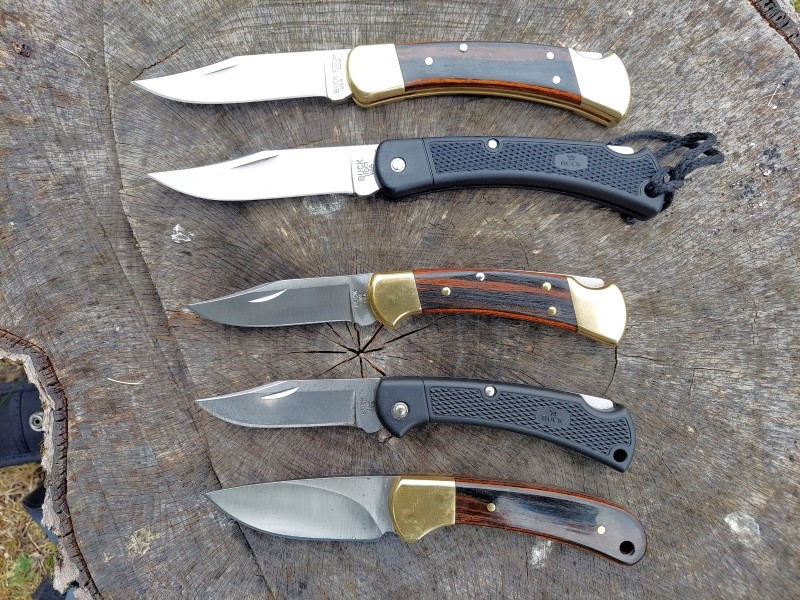
That clip point allows for very precise cutting, as well as putting holes in things because of the very pointy tip. And because the knife has a generous “belly”, it’s also a great slicer.
The 110 features a lock-back action, which I really like. Over the years, I’ve had many liner locks and frame locks fail to keep knives open, but I’ve never had a lock back action fail me (that’s not to say that they can’t fail). I’ve found them to be supremely reliable, strong, and confidence-inspiring.
One fellow whom I know (he does a bit of writing himself) took a Buck 110 to Vietnam, where it served him very well for his tour of duty there in the Rangers. He’s still a fan of the design, by the way, and still has that original 110, though I believe he’s retired it now, having replaced it with a newer model. Honestly, can you get a much higher endorsement than that?
The knife just feels great in the hand and works incredibly well.
The 110 Folding Hunter retails for $59.99. That’s one heck of a good deal for a stellar knife!
2. Buck Knives 112 “Ranger”
This is the 110 Folding Hunter’s little brother! Basically, it is a slightly smaller version of the 110, so everything that was said about the 110 pretty much applies to this knife. The handle is made from ebony with brass bolsters, it’s a lock-back and uses the same steel as the 110.
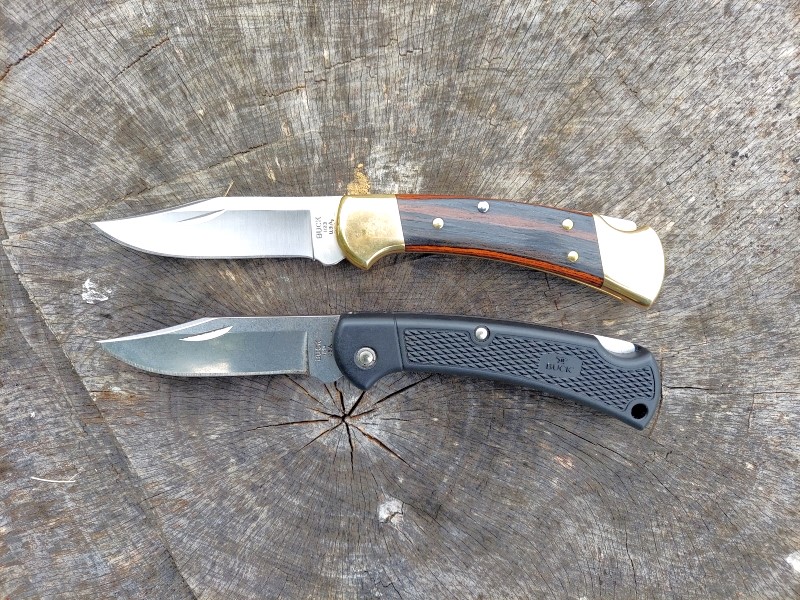
This year, 2022, is a special occasion for the Ranger, as it turns 50 years old. For a knife to remain in production for a half-century, it has to be doing something seriously right.
The origin of the 112 Ranger is rather interesting. It seems that the Buck 110 Folding Hunter was popular with sailors in the Navy, with many carrying this useful knife. One day, two sailors got into a knife fight using their 110s. The ship’s captain declared that knives with blade lengths over a certain length could no longer be carried (not surprisingly, it was aimed at the 110).
Not one to be denied, Buck designed the 112 specifically to get around the restrictions. In doing so, they created another huge hit with the 112 Ranger. People who loved the 110 seemed to take to the slightly smaller 112, like moths flocking to a bright light.
The blade length on the 112 is 3″, as opposed to the 110s 3.75″ blade. Personally, I really like the three-inch blade of the 112 because it’s a very practical length for most cutting tasks that I’d use a folder for. And the overall length of the 110 is longer, which makes it less handy for me to use.
At the time of this writing, both knives retail for the same price: $59.99. For what the user gets, that’s a darn good price, especially given how long these knives have been in production.
Both the 110 and the 112 come in several different versions. Some have different blade steels, including S30V. There are automatic versions and versions with different handle materials. I’m also happy to see that they are both available with drop point blades, which is my favorite blade tip design. Still, there’s something about the clip point—on the 110 and 112, the clip point just has that classic look that epitomizes both knives.
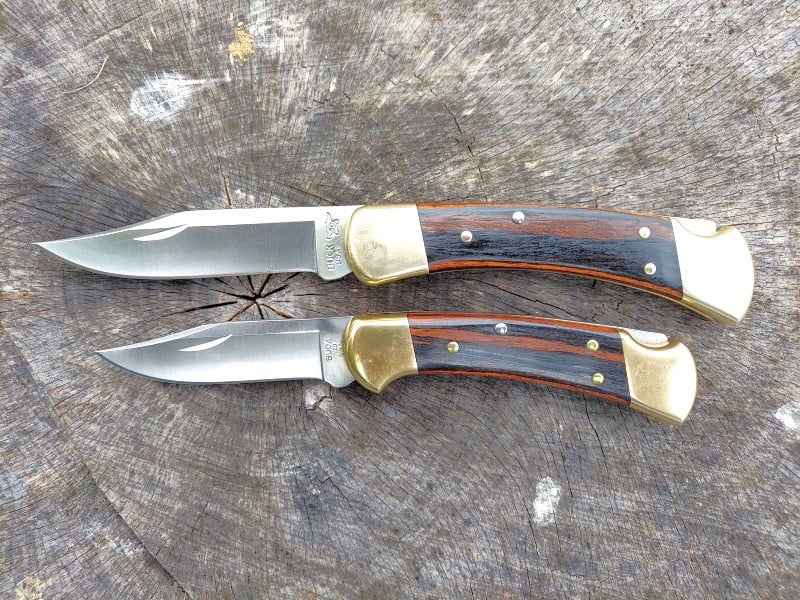
The 112 has a special anniversary edition available at the moment that will only be sold in 2022.
In all honesty, I like the smaller 112 better than the 110, as it just feels better in my hand and I enjoy the smaller size.
3. Buck 110 LT
This knife is exactly the same as the 110 Folding Hunter except that the handle is made from lightweight nylon. Same 3.75″ 420 HC blade (stonewashed) as the original 110. It is simply the lighter, less expensive version, though I would say the LT model is no less capable than the original.
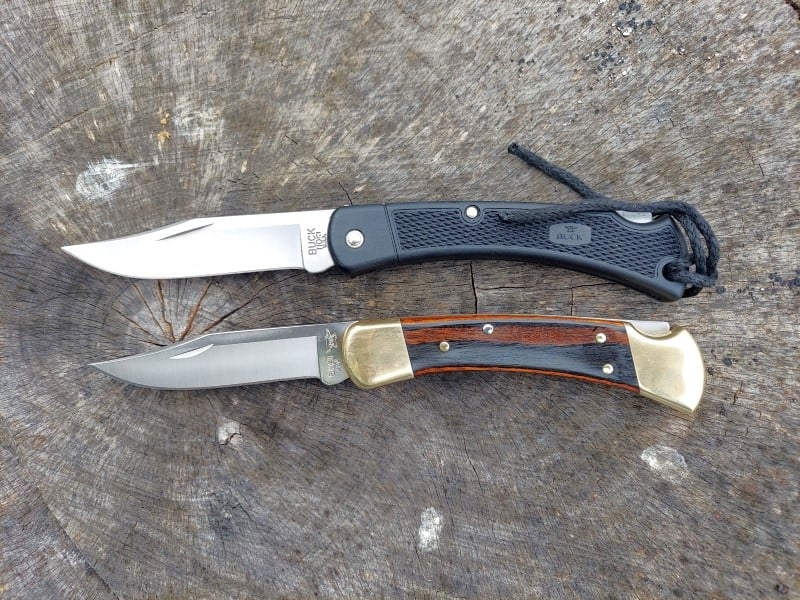
The LT version weighs just 2.1 ounces and comes with a black, nylon sheath. The retail at the time of this writing is $24.99, which is an incredible buy for the quality that the consumer is getting. For such an inexpensive knife, the action was very smooth. If you’re looking for pure utility, this is it.
4. Buck 112 LT
At the risk of being redundant, the 112 LT is the nylon-handled version of the 112 Ranger. Same blade steel, length (3 inches), and it has a stonewash finish. Again, if you’re looking for utility, this is a great knife, retailing at $21.95 at the time of this writing. It comes with a nylon sheath. For the price and the utility factor, you really can’t go wrong with this knife.
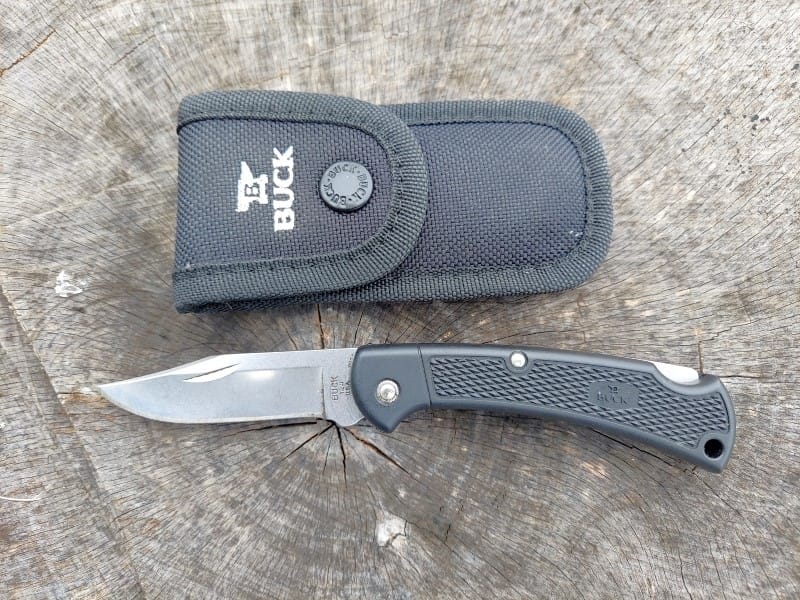
5. Buck 113 Ranger Fixed Blade
This little fixed blade hunting knife features a 3.125″ drop point blade of 420HC steel. Overall length is 7.25″ and it weighs 5.2 ounces. The handle is Buck’s usual ebony with brass bolsters. Of course, a leather sheath (pouch type) is included.
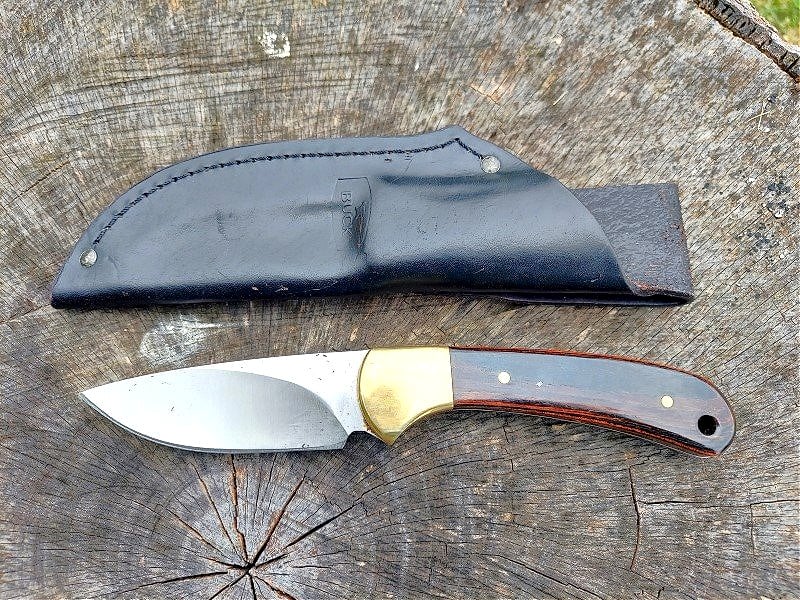
I really love this little fixed blade—the handle is super comfortable and just the right length for my hands. The blade is a perfect length for most tasks and would field dress game very efficiently. I believe it would also excel at most everyday cutting chores too.
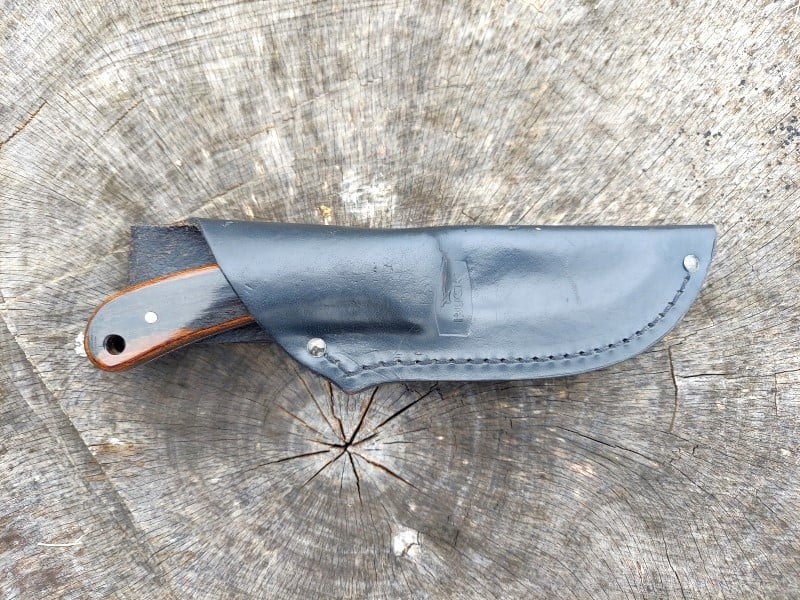
This one retails for $79.99 and is a stellar value for a fixed-blade knife. And it also looks really good while being utilitarian at the same time. The wood on the handle just looks very classic and handsome. For the money, you’ll have a tough time finding another fixed blade knife that offers this much value, in looks and utility.
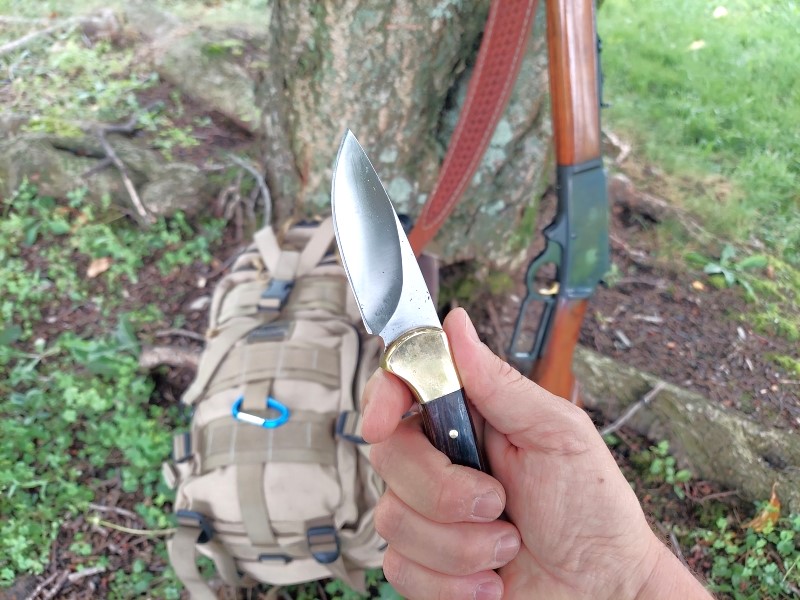
6. Kershaw Cryo
I was at my local Tractor Supply store and saw the Kershaw Cryo in a display case. On a rare spur-of-the-moment impulse, I purchased it with the express idea of reviewing it for this article. The blade shape caught my eye, as it looked very practical. I thought the retail price of $49.99 wasn’t too bad either.
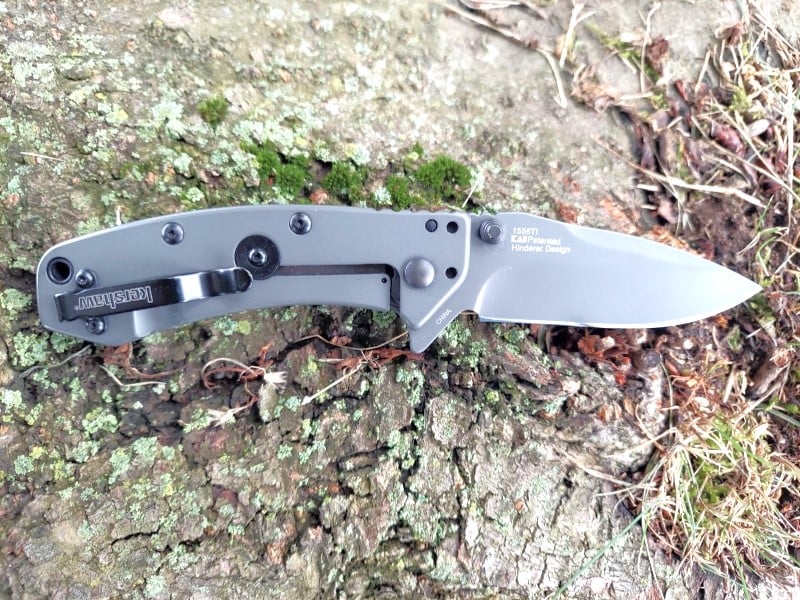
It’s a little flipper folder with a surprisingly decent action. Using the flipper tab (you can also use the thumb stud to open it), the blade flies open fairly quickly and smoothly. I dare say it’s fun to flip open, although I’m not a fan of treating knives as fidget toys. Nevertheless, this one has a little bit of a fun factor.
There’s a pocket clip that can go on either side, for both tip-up and tip-down carry, making it versatile.
I shouldn’t be too surprised that the ergonomics on this knife are very good, as it was designed by noted knife maker, Rick Hinderer.
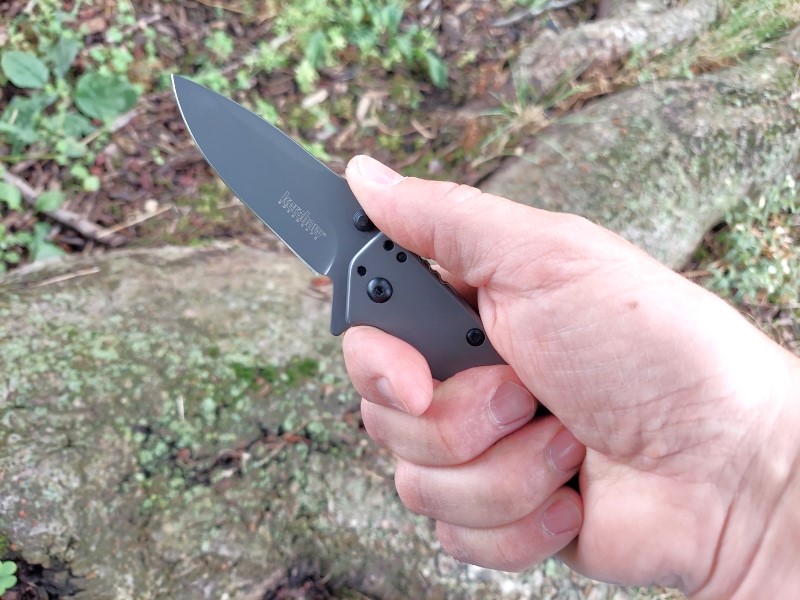
The blade steel is 8Cr13MoV, which isn’t at the apex of knife steels, but it will suffice for an everyday pocket knife. Both the blade and handle are coated with titanium carbo-nitride, which gives a nice, bead-blasted appearance of a dull gray. I really like the coating, and wish more knife companies would use it because so far, it’s held up great and I love the look. There is also a Hinderer lock bar stabilizer so the frame lock does not get bent too far out when closing the knife. The blade is of the drop point configuration and is 2.75″ long. The subtle swedge along the back of the blade looks attractive, though, and the blade has enough belly to make it a very good slicer. Overall, I’m a huge fan of the blade configuration. I’m sad to see that this one is made in China.
7. Dozier Kabar Folding Hunter
I’ve long admired the designs by Bob Dozier, which helped me pull the trigger on this folding Kabar Dozier-designed hunter. I picked this one up for $21.95 at the time of writing and I’m happy that I did.
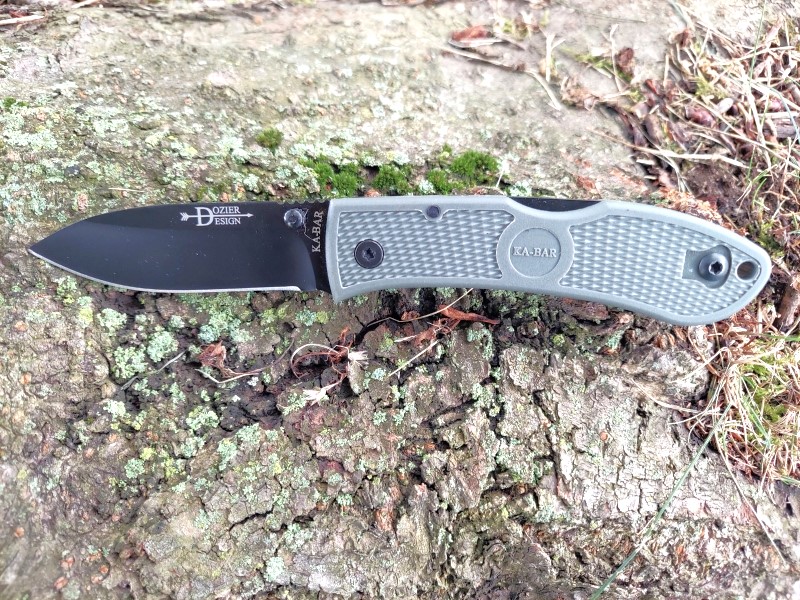
The 3″ long drop point, hollow-ground blade is made from AUS 8A Stainless Steel. Handles are comprised of Zytel. To open, there is a single thumb stud set up for right-handed folks (I really wish Kabar had installed a thumb stud on the other side too). The action is pleasantly smooth and lockup is excellent. This is a lock-back knife, and the design is known for its strength and reliability. Blade thickness is .11″.
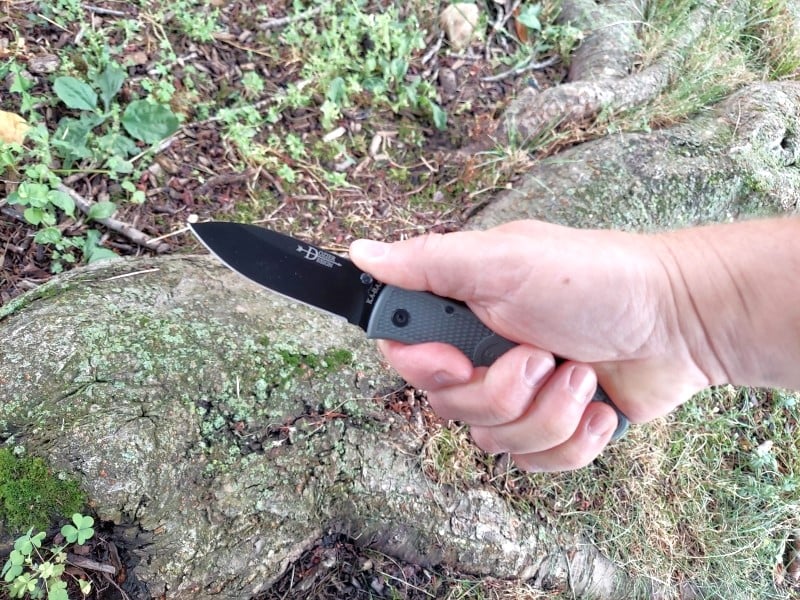
The blade finish is black and I chose a handle in Foliage Green. However, they offer a number of various handle colors, ranging from Coyote Brown, Blaze Orange, Hunter Blue, Pink, Kelly Green, and others. For a slightly higher price, there is a model in D2 Tool Steel.
The ergonomics on this knife are very nice and I’m glad I grabbed one. For being made with low-cost materials, it is a surprisingly solid knife. This brings me to the point that sometimes a knife’s design (at least for me) can trump the materials it’s made from, within reason.
Bonus: Spyderco Para 3 Lightweight
Finally, we have Spyderco bringing up the rear. I cheated a little on this one, as it sells for around $115 as this is written. I know it goes a little above the $100 limit, but only by $15, and I think this one is definitely worth it. It’s an outstanding little knife that cuts like an angry wife’s tongue. Mine is serrated (they can be had in plain edge as well, and also black-coated blades), and the cutting ability is fantastic. The steel is CTS BD1N and the leaf-shaped blade is 2.92″, so it is legal in most places. While not the highest grade steel, I’ve found this one to hold its edge for a fairly long time, so I have no complaints. It’s a full flat grind (FFG), which adds to its cutting abilities.
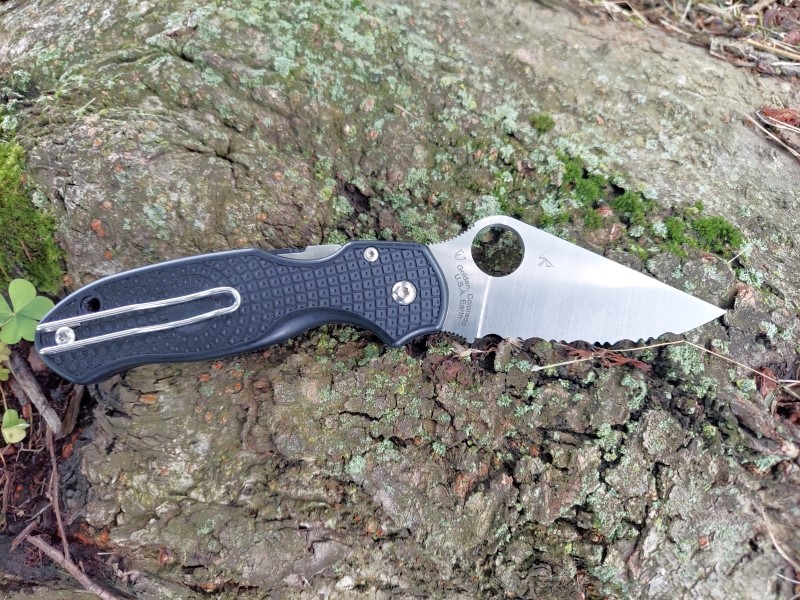
The handle material is FRN (Fiberglass Reinforced Nylon), so the weight of this knife is only 2.4 ounces. Some people don’t like the FRN, claiming that it feels “cheap”, but I’m a fan because it’s sturdy and very light. When you place it in your pocket, you really don’t even know it’s there until you need it. It also has the wire “Paperclip” pocket clip, which I’ve found to work very well.
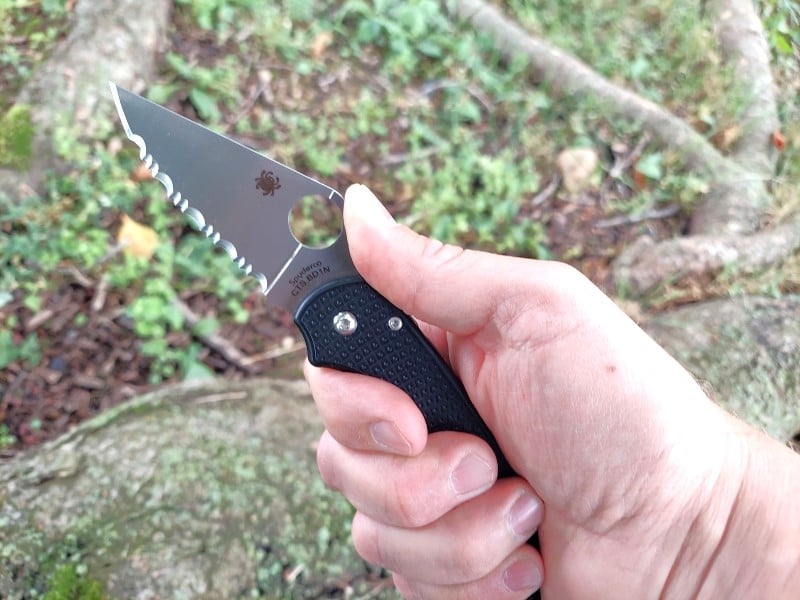
Opening the knife is accomplished via the signature Spyderco round hole in the blade. It works great and is very quick. Rounding out the package is the Compression Lock, which I’ve found to be extremely reliable over the years; I’ve never had an issue with one, and I’ve got quite a few knives with this locking system.
Wrapping Up
Well, there you have it. Seven quality knives for under a hundred bucks (a few that are well under a hundred), and one that’s slightly higher. Every one of them functions very well and meets the utility needs of most people, and the hunting needs of thousands each year.
Yes, there are higher-dollar knives with fancier materials. However, if you’re reading this, you likely are interested in what’s out there for a reasonable price. Each of these quality knives will get the job done and won’t break the bank. Sometimes the superior design of a knife can override the inexpensive materials it’s made from.
